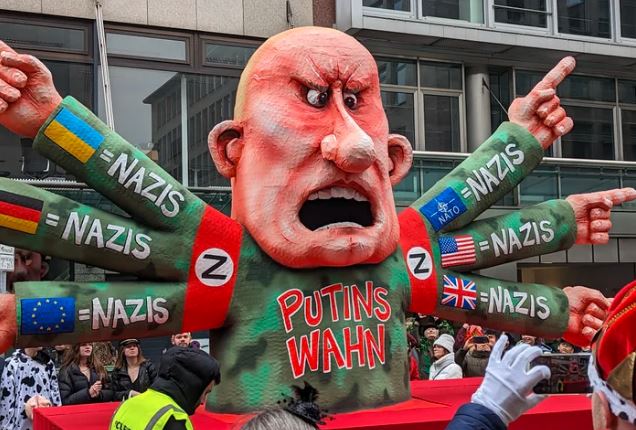Article by: Oscar Clarke
Ever since launching his full invasion of Ukraine, Vladimir Putin has claimed he is “denazifying” his neighbor. However, Russian propaganda has been calling Ukraine “Nazi” since 2014, the year a pro-European revolution deposed a Putin stooge, and a newly elected president, Petro Poroshenko, began a process aiming at membership of the European Union.
The Russian claim that Ukraine became Nazi the moment it sought a closer relationship with Europe corresponds to the Russian view of Europe as the contemporary home of Nazism.
- branded the European Union the brainchild of Adolf Hitler;
- claimed that the European Commission grew out of Nazi ideas;
- and attacked former German chancellor Angela Merkel for her “commitment to Aryanism” (these are just a handful of examples taken from the EUvsDisinfo database).
When the current German chancellor, Olaf Scholz, belatedly – and against his and Germany’s isolationist instincts – agreed to provide Ukraine with tanks for its defense, Putin invoked Stalingrad as he warned that German tanks would once more roll into Russia.
Many observers have noted that Russian propaganda specializes in attacking its enemies by projecting characteristics of the Russian regime upon them.
Simply put, Russia appears to meet many major historical and political scientific definitions of fascism:
- it is a Party state which promotes an extreme (and expansionist) nationalism;
- disseminates its ideology through state-controlled media;
- and ruthlessly persecutes political opposition.
Yet it attacks Ukrainians, the West, and Russian political oppositionists as “fascists” and “Nazis.”
This conundrum is described by Timothy Snyder, who has coined the term schizo-fascism to describe what he calls “fascism taken to its illogical extreme”: the absurd denunciation of all opponents of fascism as “fascist.”
Similarly, the lying propaganda campaign about the Ukrainian genocide against ethnic Russians in the Donbas was preparatory to Russian action in that area – the forced deportation of Ukrainian children – which meets the definition of genocide codified by the Genocide Convention.
The Soviet concept of Nazism: everyone opposed to Soviet totalitarianism
But the misuse of political concepts is nothing new in Russia. In Soviet times, the totalitarian regimes established in the East Bloc were called “People’s Democracies.” In all countries, these “People’s Democracies” were brought into being by political coalitions formed under duress. Local communist parties took advantage of the postwar presence of the Red Army to intimidate and infiltrate democratic parties so that it made no difference which party the luckless people voted for since they were all under communist – and, therefore, Soviet – control.
The Soviets referred to these shotgun marriages as “anti-fascist” coalitions, which meant that any party refusing to join them could be branded “fascist” or “Nazi,” providing the Soviet authorities with the justification for outlawing it and imprisoning its leaders.
The terms “fascist” or “Nazi” meant simply anyone opposed to Soviet totalitarianism.
The Soviet theory of fascism
In the Soviet Union, no serious study of fascism or National Socialism – not to mention totalitarianism – was ever produced. It is almost too obvious why.
If a fascist movement begins with a revolutionary elite, or vanguard, which comes to power on the back of a mass movement and proceeds towards the violent overthrow, suppression or Gleichschaltung of every authority except that of the Party, then it would have to be admitted that the revolution led by Lenin in 1917 was the prototype of a fascist revolution.
If fascism is to be defined by its nationalist or racist ideology, then the antisemitic campaigns in the postwar Soviet Union, or the hyper-nationalism of the period of the “Great Patriotic War” – attended by genocidal campaigns against ethnic minorities like the Volga Germans – would have to be contended with.
Thus, from the first, the Soviets developed their own theory of fascism, which ignored all of these things.
When National Socialism emerged in Germany, the Soviet theory, disseminated abroad by the Comintern, was that it was the final and most reactionary stage of capitalism, a desperate attempt by the forces of capital to establish a dictatorial regime to hold down the rising proletariat.
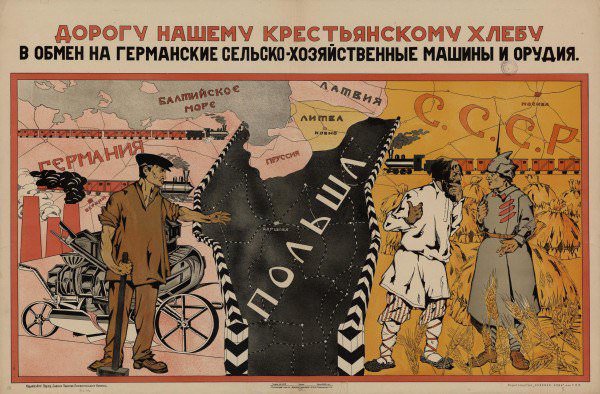
Since the victory of the working classes was treated as a prophecy from Marx, the German Communists were first instructed to support Hitler’s campaign against the “bourgeois” Republic since his victory would be only a prelude to the communist revolution (the communists’ slogan was “after Hitler, us”).

But when Hitler disproved that prophesy by smashing the communist movement to pieces, Soviet propaganda began to present him as the latest incarnation of the Western campaign against Soviet Russia, dating back to the Western intervention in the Russian Civil War.
All capitalist countries, according to the Soviet theory, were proceeding towards their “fascist” final stage. And all of them, sooner or later, would ally with Hitler in a bid to attack and destroy the Soviet Union.
Such was Stalin’s distrust of the West that he resolved to make Hitler his own instrument, concluding what he called a “friendship cemented in blood” with the Führer. The Nazi-Soviet Pact of 1939 enabled Hitler to invade Poland and start the Second World War. It also contained Secret Protocols delineating how Central and Eastern Europe would be divided between the Nazi and Soviet empires.

Stalin was so faithful to it that, in June 1941, he refused to believe the first reports of Operation Barbarossa. He retreated to his dacha for several days, experiencing a mental crisis as the Wehrmacht advanced.
After June 1941, Churchill embraced Stalin as an ally in the fight against Hitler, disproving the Soviet theory that the capitalist states were desperate to join the Nazis in a fight against the Soviet Union. “If Hitler had invaded Hell,” Churchill famously remarked, “I would make at least a favorable reference to the Devil in the House of Commons.”
The eternal Nazi threat in Soviet propaganda
Trending Now
Once the War was over, however, the Soviets quickly forgot about the Grand Alliance. They took over Radio Berlin and started broadcasting propaganda against their ostensible allies in occupied Germany. President Truman was regularly branded a “little Hitler” and the democracies were accused of enabling “neo-Nazism.”
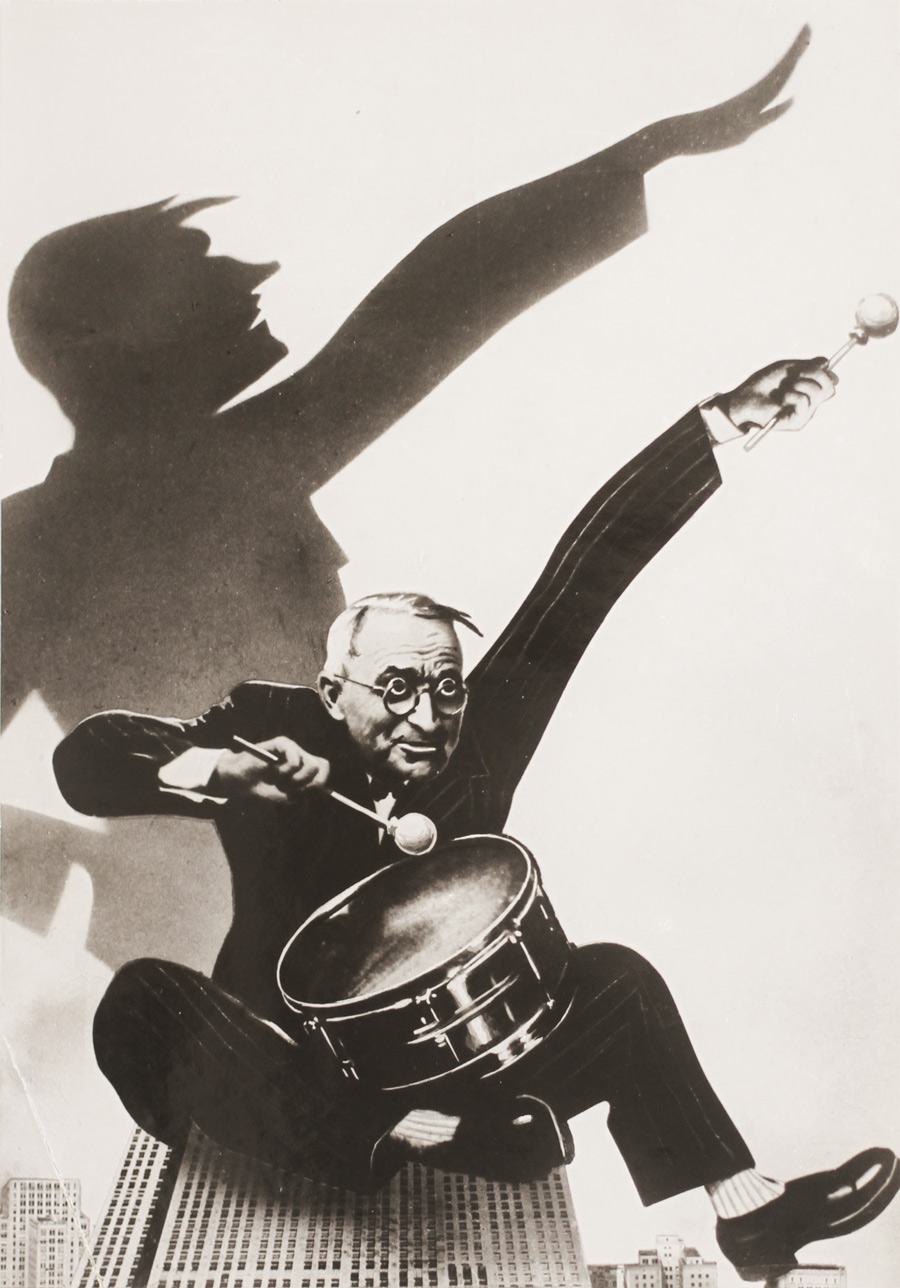
In the French zone, from 1945 until its cover was blown in 1948, the Soviets organised an Antifaschistischer Kampfbund (Anti-fascist struggle group) to campaign against the restoration of a free press, which was treated as the same thing as a fascist press, since it wasn’t under communist control.
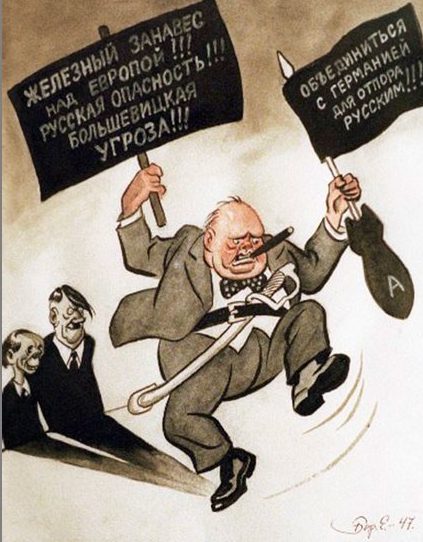
Later, the unfortunate East Germans were taught that the United States had re-established fascism in the Bonn Republic, and those who expressed public scepticism about that were whisked away to Buchenwald or Sachsenhausen, the Nazi concentration camps that had been reopened by the NKVD.
In the USSR, “fascism” and “Nazism” became monikers for supposed enemies of Russia – as they are, again, for Putin, today.
“Anti-fascism” (fascism being a Soviet synonym for the Western democracies) became the guiding ideology in East Germany. When, in 1961, Khrushchev had the Berlin Wall erected, it was called by the authorities the “anti-fascist protection wall.”

The absence of any kind of scholarly discussion in the Soviet Union about the history of Nazism or fascism continued until Gorbachev instituted Glasnost in the mid-1980s. Instead of phenomena to be investigated by historians and political scientists as they were in the West, “fascism” and “Nazism” became monikers for supposed enemies of Russia – as they are, again, for Putin, today.

It was a habit that had actually been inaugurated during the Moscow Trials, when it hardly mattered if the victims were accused of collaborating with the Gestapo or with the Western “imperialists.”
At the most famous trial, Bukharin and his co-defendants were accused of spying for both – since Nazi fascism was only the final form of capitalism to which all the “imperialist” countries were heading.
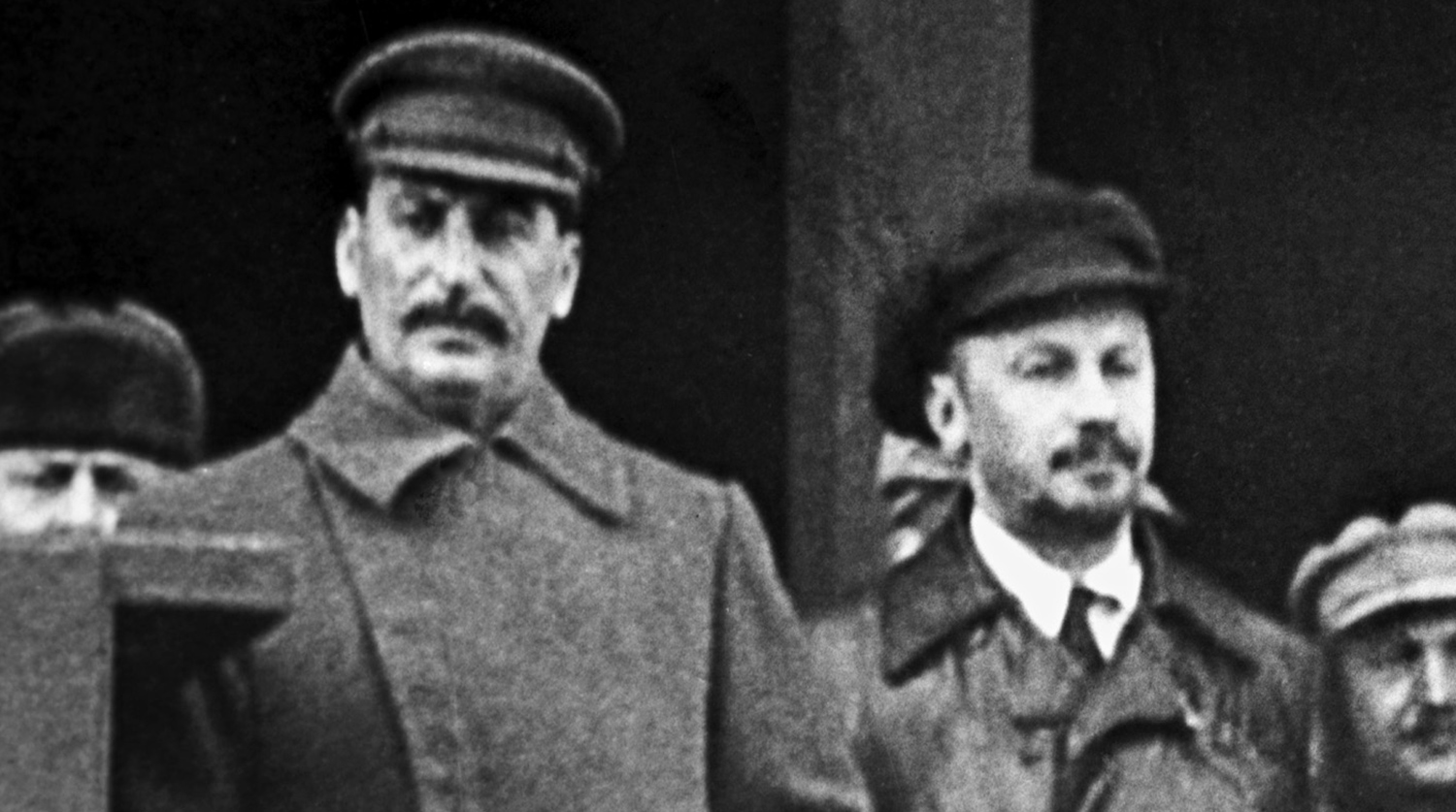
In 1951, a Soviet historian named Alexander Berezkin was awarded the Stalin Prize for The United States: Active Organiser in War Intervention Against Soviet Russia, 1918-20. Though the book was about the Russian Civil War, it included a Stalinist rewriting of the history of the Second World War. After helping Hitler in his Eastern expansion “so that he might be the strangler of the Soviet Union,” Berezkin wrote, “the United States rejoiced when Hitler attacked the Soviet Union in 1941.”
It was precisely the opposite of what actually happened (the US started arming the Soviet Union through lend-lease immediately). Still, it reflected the view that Stalin had held since the mid-1930s: there was nothing novel about Nazism; it was only part of the war of the West against the Soviet Union, which began in 1917.
Rewriting WWII as Europe's eternal war on Russia
Lately, Russian propaganda has been rewriting history in much the same way. Russians have always been taught that the World War began in 1941. But, in a speech earlier this year, Putin added that, at the time of the Battle of Stalingrad, most of Europe, rather than occupied by the Nazis, was simply Nazi: Russia faced an attack from Nazi Europe, just as it does (apparently) today.
Forget the Prussian-Russian alliance against Napoleon. Even in the 19th century, Putin added, the various combinations of the European powers were motivated only by the eternal mission to oppress and dismember Mother Russia.
If the accusation that the Ukrainians are “Nazis” – who, according to Putin, wear Wehrmacht symbols on their uniforms – is the most powerful one that Russian propaganda can make, it is not so much because of any of the terrible things that are actually true about National Socialism.
Instead, it is because, in Soviet times, Russians have been taught a peculiar version of the history of the Second World War -- that it was the most extreme chapter in the eternal war of the West against Russia.
 Oscar Clarke holds a PhD in History from the University of Bristol and writes about history and politics for various publications
Oscar Clarke holds a PhD in History from the University of Bristol and writes about history and politics for various publicationsRelated:
- Putin’s Big Lie: the “Donbas genocide” and “impending Ukrainian attack”
- A guide to Russian propaganda
- A guide to Russian propaganda. Part 4: Russian propaganda operates by law of war
- Soviet myths about World War II and their role in contemporary Russian propaganda
- Revision of History: How Russian historical propaganda justifies occupation of entire south-eastern Ukraine
- branded the European Union the brainchild of Adolf Hitler;
- claimed that the European Commission grew out of Nazi ideas;
- and attacked former German chancellor Angela Merkel for her “commitment to Aryanism” (these are just a handful of examples taken from the EUvsDisinfo database).
Simply put, Russia appears to meet many major historical and political scientific definitions of fascism:
- it is a Party state which promotes an extreme (and expansionist) nationalism;
- disseminates its ideology through state-controlled media;
- and ruthlessly persecutes political opposition.

